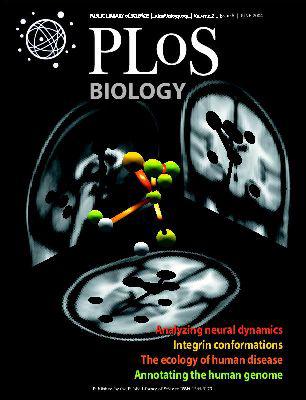人脑发育过程中功能网络模块重叠并与个体间连接组差异有关
IF 7.8
1区 生物学
Q1 BIOCHEMISTRY & MOLECULAR BIOLOGY
引用次数: 0
摘要
人脑功能连接体的模块结构在发育过程中经历了大量重组。然而,以往的研究隐含地假定每个区域只参与一个模块,而忽略了模块之间潜在的空间重叠。重叠的功能模块是如何发展的,以及这种发展是否与灰质和白质的特征有关,这些仍然是未知数。利用 305 名儿童(6 至 14 岁)的纵向多模态结构、功能和弥散核磁共振成像数据,我们研究了功能网络重叠模块的成熟过程,并进一步揭示了它们之间的结构关联。我们使用以边缘为中心的网络模型来识别重叠模块,并使用熵度量来量化模块隶属关系中的节点重叠。我们发现,儿童模块隶属关系中大脑节点的重叠程度存在区域异质性空间拓扑,腹侧注意区、躯体运动区和皮层下区的熵值较高(即更多模块参与),而视觉区和默认模式区的熵值较低(即较少模块参与)。重叠模块以线性、空间可分离的方式发展,背内侧前额叶皮层、腹侧前额叶皮层和普坦门的熵降低(即模块参与度降低),顶叶和外侧前额叶皮层的熵增加(即模块参与度增加)。重叠的模块模式捕捉到了以年龄为特征的个体大脑成熟度,并通过整合灰质形态学和白质微结构特性进行了预测。我们的发现突显了重叠功能模块及其结构基底的成熟,从而推进了我们对连接组发育原理的理解。本文章由计算机程序翻译,如有差异,请以英文原文为准。
Functional network modules overlap and are linked to interindividual connectome differences during human brain development
The modular structure of functional connectomes in the human brain undergoes substantial reorganization during development. However, previous studies have implicitly assumed that each region participates in one single module, ignoring the potential spatial overlap between modules. How the overlapping functional modules develop and whether this development is related to gray and white matter features remain unknown. Using longitudinal multimodal structural, functional, and diffusion MRI data from 305 children (aged 6 to 14 years), we investigated the maturation of overlapping modules of functional networks and further revealed their structural associations. An edge-centric network model was used to identify the overlapping modules, and the nodal overlap in module affiliations was quantified using the entropy measure. We showed a regionally heterogeneous spatial topography of the overlapping extent of brain nodes in module affiliations in children, with higher entropy (i.e., more module involvement) in the ventral attention, somatomotor, and subcortical regions and lower entropy (i.e., less module involvement) in the visual and default-mode regions. The overlapping modules developed in a linear, spatially dissociable manner, with decreased entropy (i.e., decreased module involvement) in the dorsomedial prefrontal cortex, ventral prefrontal cortex, and putamen and increased entropy (i.e., increased module involvement) in the parietal lobules and lateral prefrontal cortex. The overlapping modular patterns captured individual brain maturity as characterized by chronological age and were predicted by integrating gray matter morphology and white matter microstructural properties. Our findings highlight the maturation of overlapping functional modules and their structural substrates, thereby advancing our understanding of the principles of connectome development.
求助全文
通过发布文献求助,成功后即可免费获取论文全文。
去求助
来源期刊

PLoS Biology
生物-生化与分子生物学
CiteScore
14.40
自引率
2.00%
发文量
359
审稿时长
3 months
期刊介绍:
PLOS Biology is an open-access, peer-reviewed general biology journal published by PLOS, a nonprofit organization of scientists and physicians dedicated to making the world's scientific and medical literature freely accessible. The journal publishes new articles online weekly, with issues compiled and published monthly.
ISSN Numbers:
eISSN: 1545-7885
ISSN: 1544-9173
 求助内容:
求助内容: 应助结果提醒方式:
应助结果提醒方式:


